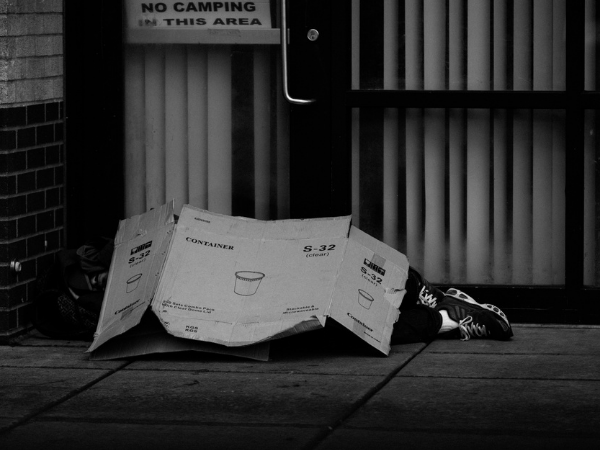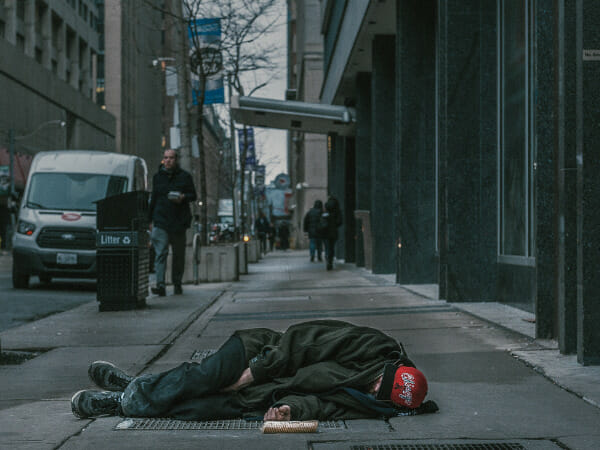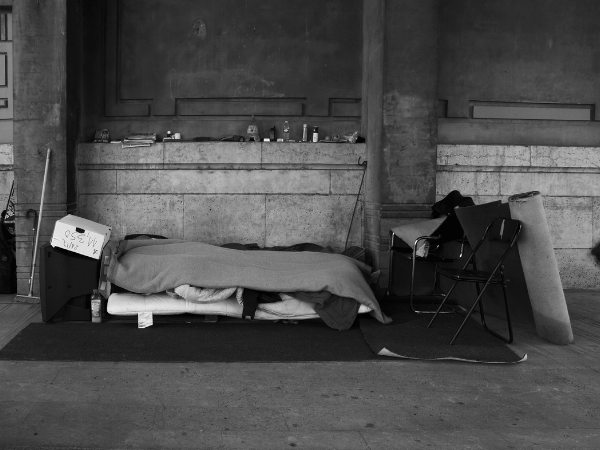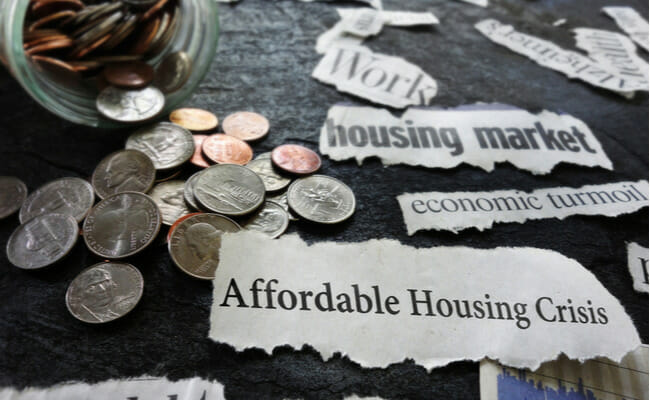How Can We Solve the Affordable Housing Crisis?
Many people in the United States find it hard to afford a house. This is causing homelessness throughout the country, and it continues to grow. Worse, the coronavirus pandemic made it harder for people to buy a home.
This problem is hardly new since we can trace its roots during World War II. Yet, the United States has not found a way to solve it once and for all. Fortunately, many experts have come up with all sorts of possible solutions to this issue.
We will have to start by establishing a clear definition of this housing market problem. Then, we will go through the history of this issue and its current status. More importantly, we will go through the possible ways to do something about this crisis.
How does the US define homelessness?

Two things may have come to mind when you look at this term. The first one is probably the 2008 Financial Crisis that came from the housing market.
The other refers to the lack of accessible housing, causing many people to become homeless. This is also the focus of this article. Yet, how do you define homelessness?
You may be scratching your head since it should be apparent. It’s in the namesake since it just means people who don’t have a home, right? This won’t be enough if you’re trying to solve this issue.
That’s because you need to elaborate on this sort of widespread problem with more details. After all, the government is best positioned to solve this problem.
However, it works via laws and regulations with various details. That’s why it needs to be specific on what homelessness is. Fortunately, we won’t have to figure this out ourselves.
The government already has the “42 US Code Section 11302 – General definition of a homeless individual.”
Here are the ways it defines a “homeless person”:
- A person or family lacks a fixed, regular, adequate nighttime residence.
- An individual or family with a primary nighttime residence is a public or private place not designed for or ordinarily used as regular sleeping accommodation for human beings. Examples include motor vehicles, public parks, campgrounds, abandoned buildings, train stations, bus terminals, and airports.
- A person or a family is living in a supervised publicly or privately operated shelter provides temporary living arrangements. These include the hotels and motels funded by Federal, State, or local government programs for local government programs.
- An individual who lived in a place or shelter not intended for regular housing. The definition also includes the people leaving the institution where they used to live.
- A person or family who is about to lose their housing. Examples include renting, owning, or living in a house without paying rent. What’s more, hotel and motel rooms that government programs don’t pay for also count,
- Unaccompanied young children and homeless families with children that haven’t lived in a permanent residence for a long time. The ones who have been moving from one home to the next frequently.
When did the housing market problems start?

Read about the roots of this problem, and you’ll come across New York in the late 1950s. It had an adequate amount of single-room housing for impoverished families back then.
They stayed as an essential source of cheap housing until the 1970s. That’s when it became the “housing of last resort” for poor single adults.
It started when the State of New York began to let go of thousands of mentally ill patients from psychiatric facilities. Many of them stayed in single-room housing units with nowhere else to go.
This reduced the number of vacant living spaces. Meanwhile, housing codes changed in 1955, making it harder to create new ones. In the 1970s, single-room housing units became the “housing of last resort.”
That’s when the US started having the first signs of homelessness you see nowadays. Thousands of people sleep on sidewalks, public parks, and similar spaces.
The government offers shelters for these individuals. Camp LaGuardia served as a temporary residence for “vagrants” during the Great Depression.
New York City even provided vouchers to homeless people or “tickets” to rent cubicles in the Bowery lodging houses. However, they couldn’t keep up with the demand.
As more people stayed in these facilities, fewer became open to others. Eventually, the housing supply wasn’t enough to prevent the increase of homeless individuals.
Read More: What Is House Hacking?
The Great Depression
This housing crisis just got worse during the 20th century. That was when the largest and longest economic recession in the history of the world. It lasted from 1929 to 1941, when the US entered World War II.
A recession means a massive decline in overall economic activity for a certain country. Various factors led to the Great Depression, such as the stock market crash of October 1929.
This caused corporate profits to plummet, so companies began laying off employees. Some had no choice but to close their operations. As a result, the homeless population growth continued.
The 2008 Financial Crisis

Several decades passed, and many people still didn’t have access to affordable homes. The 2008 Financial Crisis made it even worse. Though, it didn’t seem that way at first.
Before that year, the United States went through the frenzy and crash of the Dot-com bubble and faced the 9/11 Attacks on the Twin Towers. Both had a devastating effect on the economy.
It needed to provide more capital for businesses and lower prices for consumers. Consequently, trade should increase and eventually revitalize the economy.
That’s why the Federal Reserve dropped the federal funds rate or interest rate from 6.5% to just 1%. This determined how much people would spend on buying a new home.
Lower interest rates increased the affordability of houses. People saw it as the chance to buy a home, even if they had poor credit or no history at all.
Wall Street took advantage of this hype as banks sold home loans to its financial institutions. In turn, Wall Street banks sold them as low-risk financial instruments.
In other words, they began selling mortgages even to people who didn’t have the right credit ratings. Still, people thought this was fine as the economy was finally booming again.
That was short-lived when The Fed thought it had achieved its goal. The Federal Reserve raised interest rates again by up to 5.25%. This would slow down the purchase of new homes.
Unfortunately, this also caused housing prices to crash significantly. The new homeowners felt a backlash as the property values are now less than what they paid before.
They couldn’t just sell their homes because they’d end up owing money to their lenders. This was even worse for those with adjustable-rate mortgages or ARMs.
They often charge higher monthly payments as Fed rates go up. For ARM holders, this meant they were paying more money for a property that had been declining in value.
As a result, many Americans filed for bankruptcy. More people lost their homes and boosted the homeless population growth, particularly in cities like San Francisco.
The state comprises one-fifth of the total homeless population of the US. The problems stem from a lack of accessible housing, mental health resources, and current drug laws.
What is the state of the housing crisis today?

In 2022, the US recorded over half a million people are now homeless. These people live in temporary shelters or sleep in places where folks shouldn’t live.
Roughly 66.7% of the total homeless population are single individuals, while 33.3% are families. The total number of people without stable housing has grown by 1%.
California has the highest number of homeless people, with about 151,278 homeless people in 2022. Here’s a list of the US states with the highest number of homeless people:
- California – 151,278
- New York – 92,091
- Florida – 28,328
- Texas – 25,848
- Washington – 21,577
- Massachusetts – 18,471
- Oregon – 15,876
- Pennsylvania – 13,199
- Georgia – 10,443
- Ohio – 10,345
What are the causes of the US homelessness crisis?
Congress helped create the affordable housing crisis through decades of underinvestment and unnecessary restrictions. @NLIHC CEO @dianeyentel and I spoke about what Congress can do to help fix this crisis. pic.twitter.com/OhdKQ1RFo8
— Elizabeth Warren (@SenWarren) March 17, 2021
You’ve seen just how long this problem has been around in the country. What’s more, its current causes are mostly similar to those from the past decade.
That’s why the US government looked into this issue. Eventually, its economic advisors released a report titled “The State of Homelessness in America.” in September 2019.
It listed four major causes of the country’s housing crisis. Let’s take a deeper look at each one:
#1. Overregulation increases housing prices
Eviction moratoriums helped folks make it through the coronavirus pandemic, but they’re a band aid on a larger problem: We just don’t have enough affordable housing in this country. This crisis isn’t over, and I'll continue to work toward equitable, affordable housing for all. https://t.co/0IVkgeDl9a
— Senator Jeff Merkley (@SenJeffMerkley) June 20, 2021
Various regions of the United States impose too many rules for their housing markets. They caused home prices to rise, so more people couldn’t purchase homes.
The US government proposed that relaxing these rules could help with the housing problems. That’s why it checked the effects that deregulation could have on 11 metro areas.
Its findings showed that homeless Americans would drop by roughly 13%. The amount would drop further if you look at each metro area.
For example, San Francisco would experience a 54% drop, and the amount in Los Angeles would fall by 40%. New York City would decrease its homeless population by 23%.
Overall, deregulation would cause a 31% drop for all 11 metro areas. This makes up 42% or nearly half of the total number of homeless people in the United States.
#2. Tolerable conditions for sleeping outside shelters

The report showed that states with warmer climates had higher rates of homelessness. That’s because it’s more bearable for folks to live in their streets.
If you think about it, this makes sense. They won’t have to huddle up around makeshift fires to keep warm. The homeless wouldn’t need many layers of blankets to shield them from the cold.
This is why the report found a connection between the states with the highest number of homeless people with their temperatures.
For example, New York and California are warmer than many of their neighbors. If you look at the previous list, you’ll find them in the top five.
This is why the government proposed policing street activities in these areas. In turn, these states may see a decline in the homeless population.
#3. The abundance of temporary housing
For decades, this has been a go-to solution, but it hasn’t solved the housing crisis. If you look closely, it’s now contributing to this nationwide issue.
New York, Washington, and Boston have 2.7 times more sheltered homeless people than any other city. Yet, their numbers just keep on rising.
The US report suggests that most people preferred living in temporary housing. Still, it remarked that these shelters are an essential safety net of last resort.
The report notes that the right-to-shelter policies may not be the best approach in solving the housing crisis.
#4. Individual factors increase the chances of homelessness
In a new op-ed, economist Mark Zandi and housing expert Jim Parrott confirm what we know is true: housing is infrastructure, and @POTUS’s #AmericanJobsPlan is key to addressing the nation’s affordable housing crisis and setting up America for the future.https://t.co/YwkOFuEkB6
— Secretary Marcia L. Fudge (@SecFudge) June 9, 2021
Some people may struggle to buy a home not just because of the expensive home prices. They may have personal issues that prevent them from doing so. The US housing studies point to the following factors:
- Severe mental illness
- Substance abuse problems
- History of incarceration
- Low income
- Weak social connections
Can’t we just provide people with homes?

Most people assume that you can just solve this problem by giving everyone a place to stay. Unlike the public shelters, each homeless person will have a house to their name.
If a homeless person owns a house, they won’t be homeless anymore, right? If you’re a homeowner, you would probably see the problem with such a solution.
Owning a home means shouldering various housing costs. The biggest is the mortgage payments that may even have an increasing interest rate depending on your home loan.
You also have to pay for utilities in that house which costs the average middle-class household $2,000 per year. The homeowner will pay for food and other expenses in the same period.
Most people become homeless because the housing market has an affordability problem. Either they don’t have jobs, or they don’t make enough income to afford a house.
If you provide them with a home, they will likely not keep up with the various costs. As a result, there is a huge chance that they will just go back to the streets.
Proposed solutions to the affordable housing crisis

It’s not just the government that thought of ways to combat this national issue. For example, let’s take a look at what the Stanford Social Innovation Review suggested:
- Remove the local, state, and federal regulations for home builders. In turn, they will have an easier time creating new houses and apartments. Eventually, this will provide more housing options that people can afford.
- Use innovations to build homes faster at lower costs, specifically modular housing. A factory assembles them, so a home builder will have an easier time putting them together. The rooms are like puzzle blocks that you can assemble into a house. This is much faster than building a home from scratch on site.
- Offer creative financing options so more people can qualify for home loans. For example, HomeFundIt is an online crowdfunding platform that lets home buyers use gifts from loved ones as a down payment for their house.
- Help renters improve their financial status and credit ratings so that they can own a home in the long run. For example, a platform in Alexandria, Virginia, adjusts renter payments using real-time data. As a result, it reduced the chances of being late on payments and getting evicted from their space.
- Use existing homes to provide more housing opportunities. For example, the City of Boston provides gap funding for those approved for Accessory Dwelling Units or ADUs. The local authorities give a 0% interest loan with no monthly payments until residents sell or refinance their properties.
- Produce and preserve affordable housing in the neighborhoods to build on the strengths of communities. Take Century Partners in Detroit, Michigan, as an example. It hired more than 40 neighborhood residents for construction rehabilitation and lawn maintenance. This lets the communities contribute while improving their housing situation.
Also, Latino-focused organization Salud America proposed using municipal bonds to help regular people solve the housing crisis.
Local governments may propose certain funding projects through municipal bond elections. This gives people in a community a chance to approve or reject spending plans.
Related Articles
Final Thoughts
Other countries are also struggling with this issue. Take Norway, for example. It gave every homeless resident a house, regardless of any factors.
The country even provided the necessary assistance to those with drug problems or mental health issues. Still, one in five people went back to being homeless eventually.
The affordable housing crisis is a tough problem for the United States and many other countries. That’s why they must find ways to tackle it as soon as possible.







